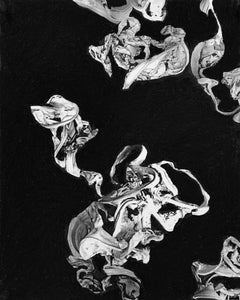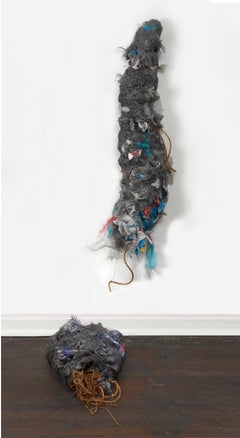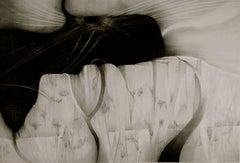Charcoal Abstract Drawings and Watercolors
21st Century and Contemporary Abstract Charcoal Abstract Drawings and Watercolors
Charcoal, Graphite, Laser
21st Century and Contemporary Abstract Charcoal Abstract Drawings and Watercolors
Charcoal, Graphite, Laser
21st Century and Contemporary Abstract Charcoal Abstract Drawings and Watercolors
Charcoal, Graphite, Laser
Early 2000s Abstract Charcoal Abstract Drawings and Watercolors
Paper, Charcoal, Pencil, Carbon Pencil
2010s Abstract Charcoal Abstract Drawings and Watercolors
Paper, Charcoal, Pastel, Acrylic, Pencil
2010s Abstract Charcoal Abstract Drawings and Watercolors
Paper, Charcoal, Pastel, Acrylic, Pencil
2010s Abstract Charcoal Abstract Drawings and Watercolors
Paper, Charcoal, Pastel, Acrylic, Pencil
2010s Abstract Charcoal Abstract Drawings and Watercolors
Paper, Charcoal, Pastel, Acrylic, Pencil
2010s Abstract Charcoal Abstract Drawings and Watercolors
Paper, Charcoal, Pastel, Acrylic, Pencil
2010s Abstract Charcoal Abstract Drawings and Watercolors
Paper, Charcoal, Pastel, Acrylic, Pencil
2010s Abstract Charcoal Abstract Drawings and Watercolors
Paper, Charcoal, Pastel, Acrylic, Pencil
2010s Abstract Charcoal Abstract Drawings and Watercolors
Paper, Charcoal, Pastel, Acrylic, Pencil
Late 20th Century Abstract Charcoal Abstract Drawings and Watercolors
Paper, Charcoal
1970s Abstract Charcoal Abstract Drawings and Watercolors
Paper, Charcoal
2010s Symbolist Charcoal Abstract Drawings and Watercolors
Charcoal, Canvas, Oil Pastel
21st Century and Contemporary Abstract Charcoal Abstract Drawings and Watercolors
Paper, Charcoal, Chalk
21st Century and Contemporary Abstract Charcoal Abstract Drawings and Watercolors
Paper, Charcoal, Ink
21st Century and Contemporary Abstract Charcoal Abstract Drawings and Watercolors
Paper, Charcoal, Ink
21st Century and Contemporary Abstract Charcoal Abstract Drawings and Watercolors
Paper, Charcoal, Ink
21st Century and Contemporary Abstract Charcoal Abstract Drawings and Watercolors
Paper, Charcoal, Ink
21st Century and Contemporary Abstract Charcoal Abstract Drawings and Watercolors
Paper, Charcoal, Acrylic
2010s Contemporary Charcoal Abstract Drawings and Watercolors
Charcoal
2010s Contemporary Charcoal Abstract Drawings and Watercolors
Charcoal
2010s Abstract Charcoal Abstract Drawings and Watercolors
Paper, Charcoal, Pastel, Acrylic, Pencil
2010s Abstract Charcoal Abstract Drawings and Watercolors
Paper, Charcoal, Pastel, Acrylic, Pencil
2010s Abstract Charcoal Abstract Drawings and Watercolors
Paper, Charcoal, Pastel, Acrylic, Pencil
2010s Abstract Charcoal Abstract Drawings and Watercolors
Paper, Charcoal, Pastel, Acrylic, Pencil
2010s Abstract Charcoal Abstract Drawings and Watercolors
Paper, Charcoal, Pastel, Acrylic, Pencil
2010s Abstract Charcoal Abstract Drawings and Watercolors
Paper, Charcoal, Pastel, Acrylic, Pencil
Early 2000s Modern Charcoal Abstract Drawings and Watercolors
Charcoal
2010s Contemporary Charcoal Abstract Drawings and Watercolors
Conté, Charcoal, Oil Pastel
2010s Contemporary Charcoal Abstract Drawings and Watercolors
Conté, Charcoal, Pastel, Oil
2010s Surrealist Charcoal Abstract Drawings and Watercolors
Steel, Stainless Steel
1930s Modern Charcoal Abstract Drawings and Watercolors
Paper, Charcoal
1990s Folk Art Charcoal Abstract Drawings and Watercolors
Acrylic, Paper, Charcoal
1990s Folk Art Charcoal Abstract Drawings and Watercolors
Paper, Charcoal
1990s Folk Art Charcoal Abstract Drawings and Watercolors
Paper, Charcoal, Acrylic
Early 2000s Folk Art Charcoal Abstract Drawings and Watercolors
Paper, Charcoal, Pastel
Early 2000s Folk Art Charcoal Abstract Drawings and Watercolors
Paper, Charcoal, Acrylic
2010s Symbolist Charcoal Abstract Drawings and Watercolors
Charcoal
2010s Contemporary Charcoal Abstract Drawings and Watercolors
Paper, Oil Pastel, Ink, Watercolor, Charcoal, Archival Ink, Archival Paper
1930s Abstract Expressionist Charcoal Abstract Drawings and Watercolors
Paper, Charcoal
1930s Abstract Expressionist Charcoal Abstract Drawings and Watercolors
Paper, Charcoal
1930s Abstract Expressionist Charcoal Abstract Drawings and Watercolors
Paper, Charcoal
1930s Abstract Expressionist Charcoal Abstract Drawings and Watercolors
Paper, Charcoal
2010s Symbolist Charcoal Abstract Drawings and Watercolors
Charcoal, Canvas, Oil Pastel
2010s Charcoal Abstract Drawings and Watercolors
Charcoal, Oil Pastel
2010s Symbolist Charcoal Abstract Drawings and Watercolors
Charcoal, Canvas, Oil Pastel
2010s Symbolist Charcoal Abstract Drawings and Watercolors
Charcoal, Canvas, Oil Pastel
2010s Symbolist Charcoal Abstract Drawings and Watercolors
Charcoal, Canvas, Oil Pastel
2010s Symbolist Charcoal Abstract Drawings and Watercolors
Charcoal, Canvas, Oil Pastel
1930s Cubist Charcoal Abstract Drawings and Watercolors
Charcoal





